We need your consent to use the individual data so that you can see information about your interests, among other things. Click "OK" to give your consent.
ASTM F1804-08(2012)
Standard Practice for Determining Allowable Tensile Load for Polyethylene (PE) Gas Pipe During Pull-In Installation
STANDARD published on 1.8.2012
The information about the standard:
Designation standards: ASTM F1804-08(2012)
Note: WITHDRAWN
Publication date standards: 1.8.2012
SKU: NS-51630
The number of pages: 2
Approximate weight : 6 g (0.01 lbs)
Country: American technical standard
Category: Technical standards ASTM
The category - similar standards:
Annotation of standard text ASTM F1804-08(2012) :
Keywords:
gas pipe, polyethylene, pull-in installation, ICS Number Code 23.040.20 (Plastic pipes)
Additional information
| Significance and Use | ||||||||
|
4.1 The ATL value is used to set the break-away strength of a weak-link device, or to set other equipment used to limit pulling force during pull-in installation of polyethylene gas pipe, or to determine if pulling equipment can extert pulling force greater than the ATL value for the polyethylene gas pipe being installed. 4.2 The ATL value is determined before gas pipe installation. |
||||||||
| 1. Scope | ||||||||
|
1.1 This practice provides a means to determine an allowable tensile load (ATL) value for a polyethylene gas pipe that is to be installed underground using methods that pull the pipe into a trench (cut or plowed), bore hole, casing pipe, or the like. The ATL value takes into account pipe size, tensile yeild strength, pipe temperature, and pulling load duration. 1.2 The ATL is used to set the break-away strength for a “weak-link” device, or as a limit setting for other devices that control the maximum pulling force exerted by equipment used to pull polyethylene gas pipe into an underground location, or to determine if pulling equipment can extert pulling force greater than the ATL value for the gas pipe being installed. A weak-link device is installed where the pipe pulling equipment is connected to the polyethylene gas pipe. If pulling load exceeds the ATL limit, the device de-couples the pipe from the pulling equipment. Other measures or equipment that limit the pulling force on the pipe are also used. When the ATL value is compared to the pulling force developed by the pull-in installation equipment and equipment cannot extert pulling force greater than the ATL value, a weak-link or other device for limiting the pulling force is not necessary. 1.3 This practice does not address weak-link device design or requirements, nor does it address the design or requirements for other equipment or procedures used to limit the pulling force applied to polyethylene gas pipe during pull-in installation. 1.4 This practice does not address installation methods or procedures employed for pull-in of polyethylene gas pipe. 1.5 The values stated in inch-pound units are to be regarded as standard. The values given in parentheses are mathematical conversions to SI units that are provided for information only and are not considered standard. 1.6 This standard does not purport to address all of the safety concerns, if any, associated with its use. It is the responsibility of the user of this standard to establish appropriate safety and health practices and determine the applicability of regulatory limitations prior to use. |
||||||||
| 2. Referenced Documents | ||||||||
|
Similar standards:
Historical
1.2.2013
Historical
1.5.2010
Historical
15.12.2012
Historical
1.3.2009
Historical
15.9.2011
Historical
1.2.2011
We recommend:
Updating of laws
Do you want to be sure about the validity of used regulations?
We offer you a solution so that you could use valid and updated legislative regulations.
Would you like to get more information? Look at this page.


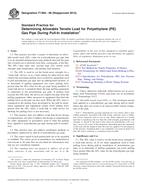
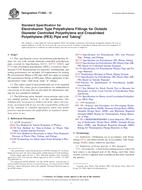 ASTM F1055-13
ASTM F1055-13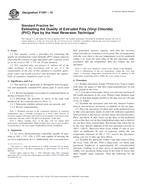 ASTM F1057-10
ASTM F1057-10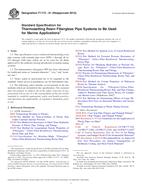 ASTM F1173-01(2012)..
ASTM F1173-01(2012)..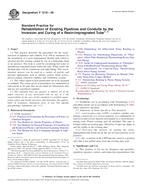 ASTM F1216-09
ASTM F1216-09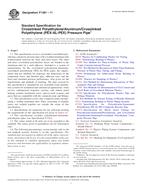 ASTM F1281-11
ASTM F1281-11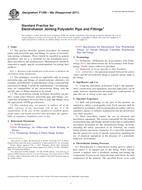 ASTM F1290-98a(2011)..
ASTM F1290-98a(2011)..
 Cookies
Cookies
